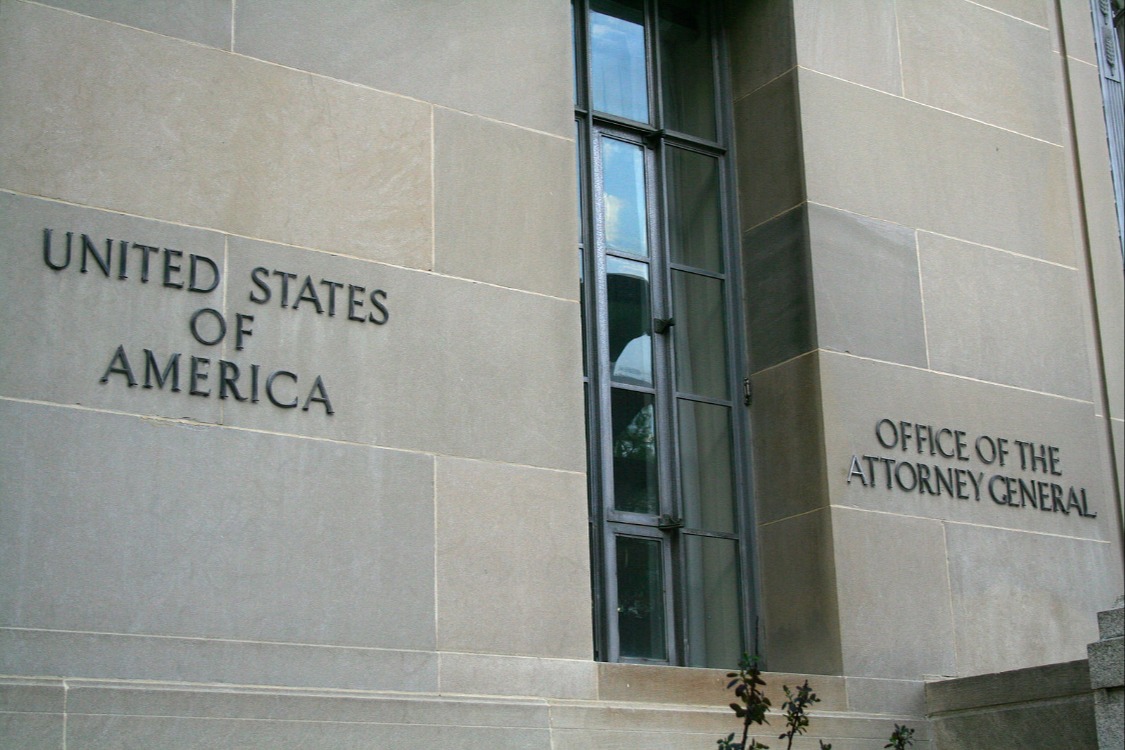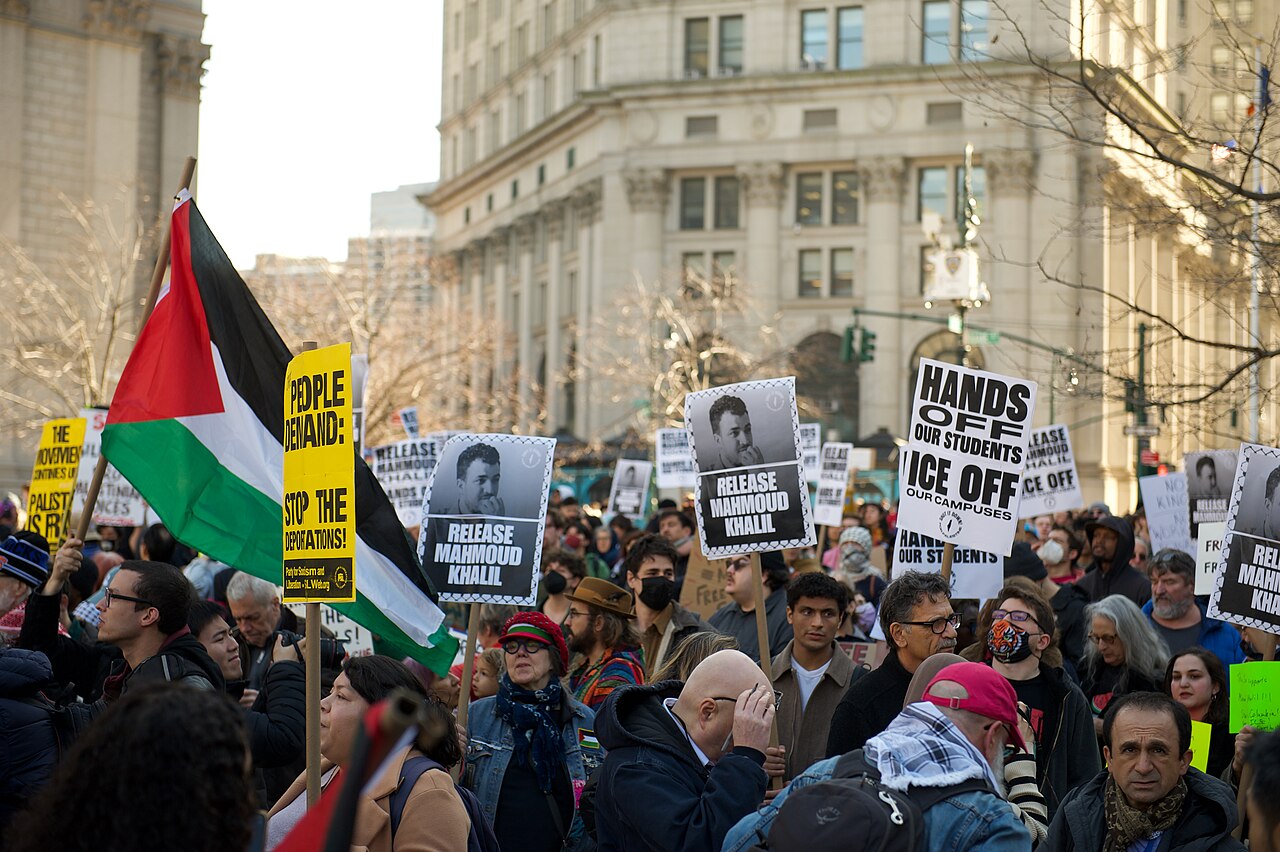"Form and Legality": The Office of Legal Counsel’s Role in the National Emergency Declaration
President Trump announced in the Rose Garden on Feb. 15 that he is declaring a national emergency on the southern border, with the goal of obtaining an extra $6.5 billion to build a border wall.
Published by The Lawfare Institute
in Cooperation With

President Trump announced in the Rose Garden on Feb. 15 that he is declaring a national emergency on the southern border, with the goal of obtaining an extra $6.5 billion to build a border wall. While reporting has described the role of the White House counsel’s office in deliberations over an emergency declaration, the Justice Department’s Office of Legal Counsel (OLC) was likely involved to ensure that the determination was made legally. But OLC’s role is not as clear as one might hope.
Legal review of presidential action normally proceeds as follows. When the president issues an executive order or a proclamation, Executive Order 11030 (President Kennedy's original Executive Order establishing the process to be followed for future EOs) provides that the attorney general should review the resulting document. The attorney general has delegated authority to conduct this legal review to OLC, and according to the OLC homepage, “All executive orders and substantive proclamations proposed to be issued by the President are reviewed by the Office of Legal Counsel for form and legality, as are various other matters that require the President’s formal approval.” As Trump has issued a presidential proclamation in order to invoke the 1976 National Emergencies Act (NEA) and declare an emergency, OLC will likely have reviewed it for “form and legality.”
While OLC is charged with reviewing executive orders and presidential proclamations in this way, that is only part of the office’s larger role within the Justice Department and the executive branch. OLC has been delegated and exercises the attorney general’s authority to provide legal advice to the executive branch, including the president. OLC attorneys both give informal (oral) advice and issue formal (written) opinions on proposed executive actions, as well as advise on legal issues that may arise in the course of interagency disputes. “Form and legality” review of executive orders and proclamations, though provided in written form, does not appear to be accompanied by the same depth of legal analysis that characterizes formal OLC opinions.
Yet the public, and indeed the legal profession, has little understanding of what “form and legality” actually means, and whether (and under what standard) it includes review of the factual findings made by the president—in this case, the findings used to declare a national emergency. When previous executive orders and proclamations have been released, former Justice Department officials and national security experts have generally affirmed that “form and legality” review is done on a narrow basis but have little to say about its meaning beyond that. And, at least in terms of publicly available information, there is minimal institutional guidance on how OLC should or does conduct “form and legality” review. A list of general principles drafted by former OLC head David Barron in 2010 includes recommendations to “provide an accurate and honest appraisal of applicable law, even if that advice will constrain the administration’s pursuit of desired policies.” But Barron does not specifically apply his general principles to “form and legality” review, nor mention it at all. And there is also reason to think that the substantive standard for written opinions, which is what Barron is discussing, does not apply to review of executive orders and proclamations.
With regard to presidential fact-finding, both the general public and members of the legal profession (including former OLC lawyers) also lack information about whether a process exists within the executive branch more broadly, and the White House specifically, to make the factual determinations necessary to take presidential actions—like declaring a national emergency. And as former OLC attorney Erica Newland recently pointed out, OLC generally defers to the president when reviewing those factual findings. So at best, though not much is known about it, OLC’s standard of review for presidential fact-finding is deferential, and its place within “form and legality” review ambiguous.
One prominent example of how “form and legality” review has operated in recent practice arose in the context of another controversial presidential action on immigration, when President Trump issued Executive Order 13769, “Protecting the Nation from Foreign Terrorist Entry into the United States”—better known as the travel ban. That executive order was widely panned as legally questionable and poorly drafted. In response to criticism of the order’s legality, the Justice Department initially refused to comment on whether OLC had reviewed any of the executive orders Trump issued in his first week of office. Eventually, in response to a Freedom of Information Act (FOIA) request from the New York Times, OLC released a memorandum detailing its approval of the order. The memo, which is barely over a page long, is mostly a description of the executive order itself. At the end is the document’s only reference to legal analysis or conclusions: “The proposed Order is approved with respect to form and legality.”
Furthermore, publicly available information pertaining to OLC’s review of the travel ban indicates that the process OLC employed in conducting “form and legality” review may not have been much more extensive than the memo suggests. Internal OLC documents relating to the executive order, released in response to a FOIA request from the government watchdog nonprofit Protect Democracy, include emails between OLC attorneys (including the attorney in charge of “form and legality” review) on the morning of Jan. 27, 2017—the morning the executive order was issued. While the attorneys make no mention of the actual review process the executive order is going through, they imply that their review at that moment is rushed, and that their ability to make any changes is uncertain. And after the executive order was issued, then-Acting Attorney General Sally Yates described OLC’s standard of review as “whether, in OLC’s view, [the] proposed Executive Order is lawful on its face and properly drafted.” While Yates gave examples of what OLC would not take into account when making this determination (“statements made by an administration or its surrogates close in time to the issuance of an Executive Order that may bear on the order’s purpose,” or “whether any policy choice embodied in [the] Executive Order is wise or just”), she did not elaborate on what factors OLC actually does consider when reviewing an executive order or other presidential action for “form and legality.” (Yates differentiated her role from that of OLC in defending her decision not to enforce the executive order.)
Therefore, if OLC is complying with federal regulations, it will have reviewed President Trump’s national emergency proclamation for “form and legality.” But it is unclear what that means (and whether it includes review of the president’s factual findings), beyond making sure that the proclamation is basically in the right format and facially legal.





